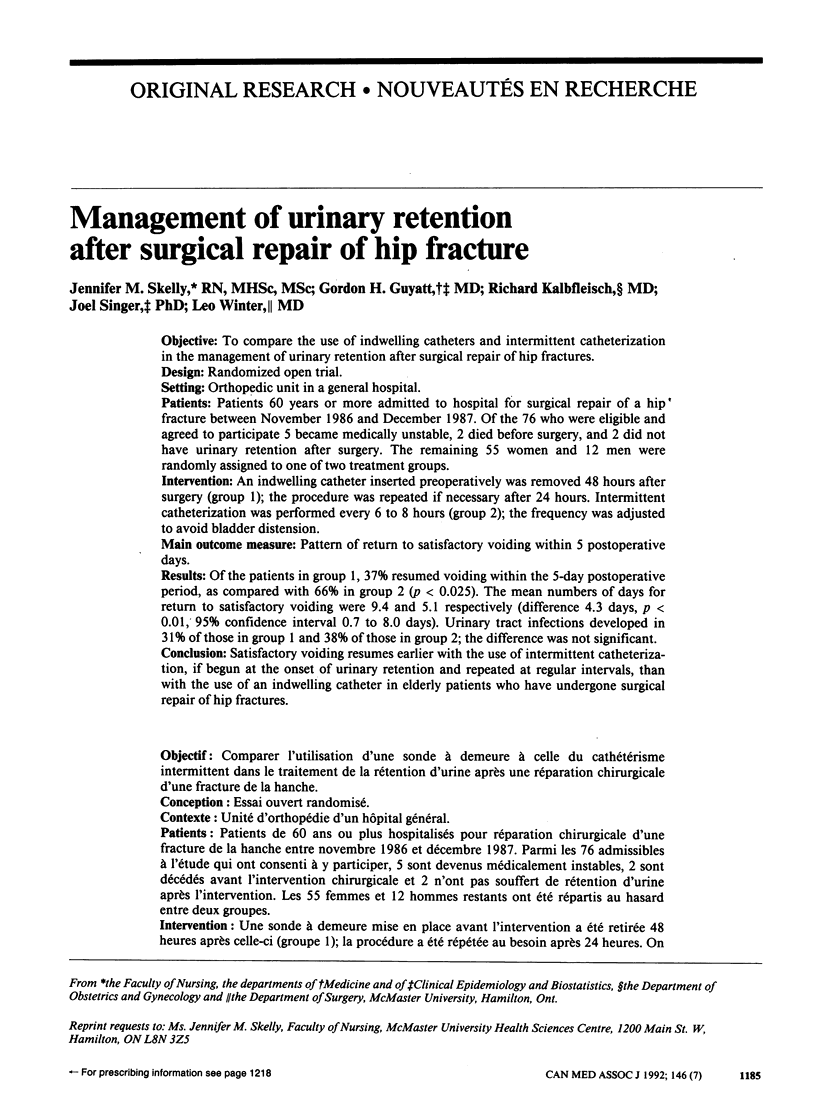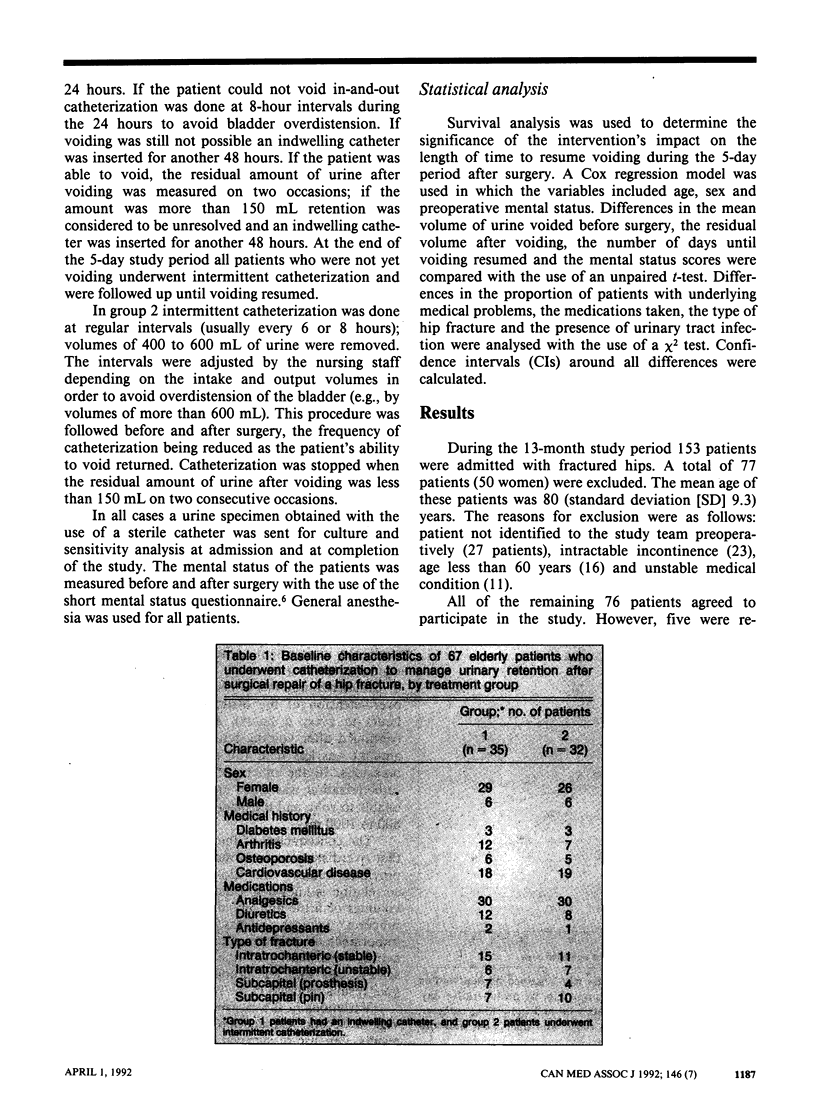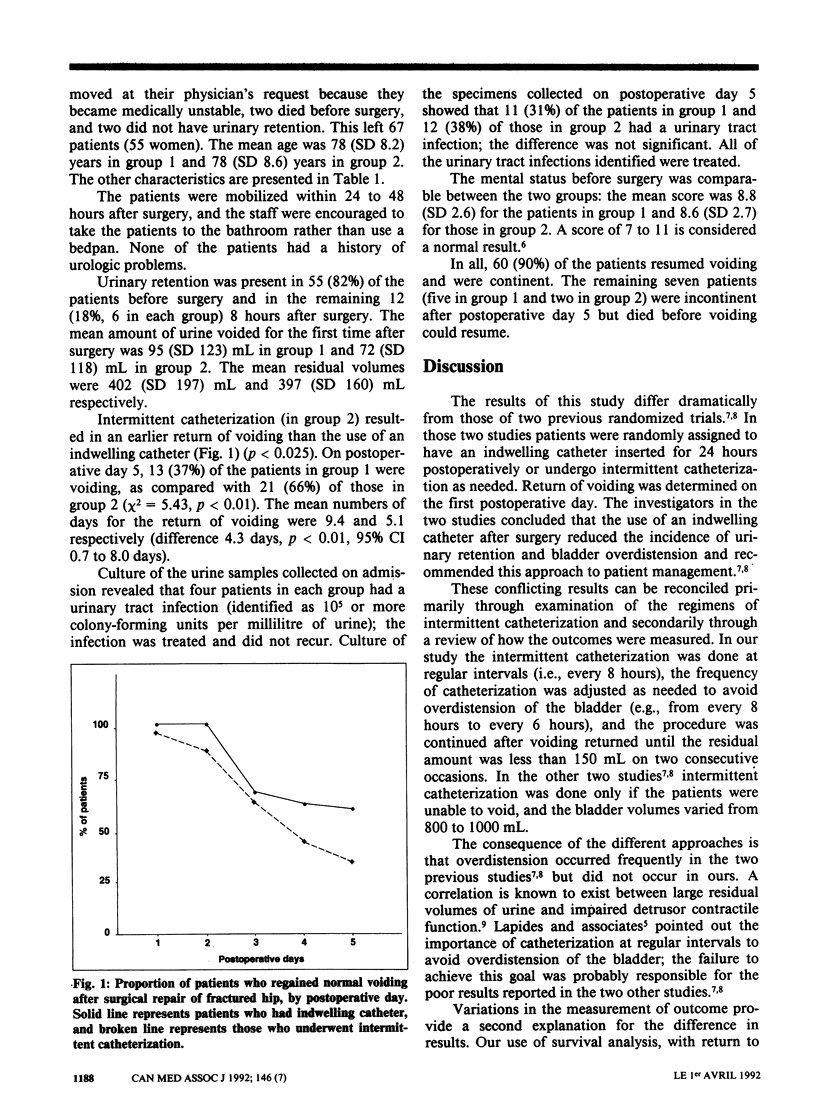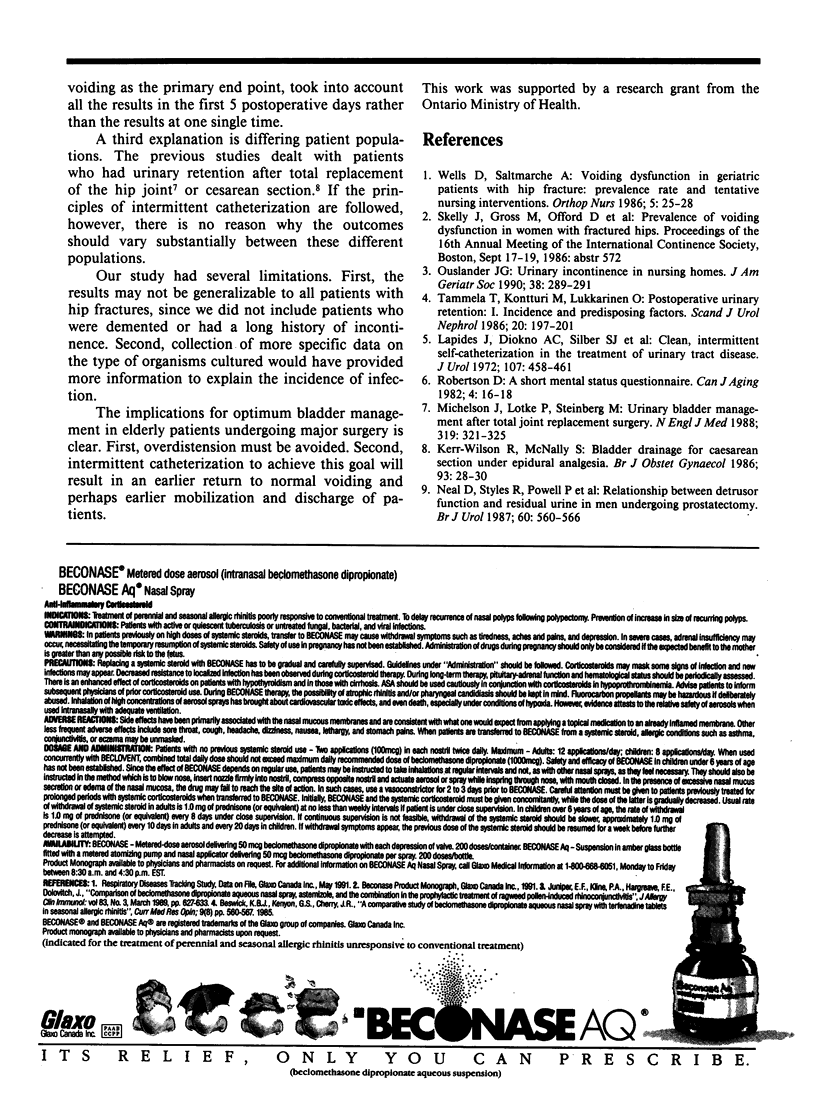Abstract
OBJECTIVE: To compare the use of indwelling catheters and intermittent catheterization in the management of urinary retention after surgical repair of hip fractures. DESIGN: Randomized open trial. SETTING: Orthopedic unit in a general hospital. PATIENTS: Patients 60 years or more admitted to hospital for surgical repair of a hip fracture between November 1986 and December 1987. Of the 76 who were eligible and agreed to participate 5 became medically unstable, 2 died before surgery, and 2 did not have urinary retention after surgery. The remaining 55 women and 12 men were randomly assigned to one of two treatment groups. INTERVENTION: An indwelling catheter inserted preoperatively was removed 48 hours after surgery (group 1); the procedure was repeated if necessary after 24 hours. Intermittent catheterization was performed every 6 to 8 hours (group 2); the frequency was adjusted to avoid bladder distension. MAIN OUTCOME MEASURE: Pattern of return to satisfactory voiding within 5 postoperative days. RESULTS: Of the patients in group 1, 37% resumed voiding within the 5-day postoperative period, as compared with 66% in group 2 (p less than 0.025). The mean numbers of days for return to satisfactory voiding were 9.4 and 5.1 respectively (difference 4.3 days, p less than 0.01, 95% confidence interval 0.7 to 8.0 days). Urinary tract infections developed in 31% of those in group 1 and 38% of those in group 2; the difference was not significant. CONCLUSION: Satisfactory voiding resumes earlier with the use of intermittent catheterization, if begun at the onset of urinary retention and repeated at regular intervals, than with the use of an indwelling catheter in elderly patients who have undergone surgical repair of hip fractures.
Full text
PDF




Selected References
These references are in PubMed. This may not be the complete list of references from this article.
- Kerr-Wilson R. H., McNally S. Bladder drainage for caesarean section under epidural analgesia. Br J Obstet Gynaecol. 1986 Jan;93(1):28–30. doi: 10.1111/j.1471-0528.1986.tb07808.x. [DOI] [PubMed] [Google Scholar]
- Lapides J., Diokno A. C., Silber S. J., Lowe B. S. Clean, intermittent self-catheterization in the treatment of urinary tract disease. J Urol. 1972 Mar;107(3):458–461. doi: 10.1016/s0022-5347(17)61055-3. [DOI] [PubMed] [Google Scholar]
- Michelson J. D., Lotke P. A., Steinberg M. E. Urinary-bladder management after total joint-replacement surgery. N Engl J Med. 1988 Aug 11;319(6):321–326. doi: 10.1056/NEJM198808113190601. [DOI] [PubMed] [Google Scholar]
- Neal D. E., Styles R. A., Powell P. H., Ramsden P. D. Relationship between detrusor function and residual urine in men undergoing prostatectomy. Br J Urol. 1987 Dec;60(6):560–566. doi: 10.1111/j.1464-410x.1987.tb05042.x. [DOI] [PubMed] [Google Scholar]
- Ouslander J. G. Urinary incontinence in nursing homes. J Am Geriatr Soc. 1990 Mar;38(3):289–291. doi: 10.1111/j.1532-5415.1990.tb03506.x. [DOI] [PubMed] [Google Scholar]
- Tammela T., Kontturi M., Lukkarinen O. Postoperative urinary retention. I. Incidence and predisposing factors. Scand J Urol Nephrol. 1986;20(3):197–201. doi: 10.3109/00365598609024494. [DOI] [PubMed] [Google Scholar]
- Wells D. L., Saltmarche A. Voiding dysfunction in geriatric patients with hip fracture: prevalence rate and tentative nursing interventions. Orthop Nurs. 1986 Nov-Dec;5(6):25–28. doi: 10.1097/00006416-198611000-00009. [DOI] [PubMed] [Google Scholar]


